Records Management
Meet the CJIS Security Policy Requirements with Our Help
The CJIS Security Policy: Moving Towards a Higher Level of Access and Security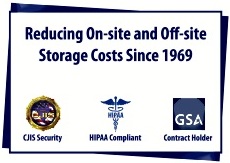
As Records and Information Management Specialists, one of the essential functions of our job is to get the facts about new and updated document rules and regulations. Here, I have gathered some helpful information for you regarding the CJIS Security Policy requirements that will affect how Criminal Justice Information (CJI) is stored and accessed.
The FBI’s Criminal Justice Information Services (CJIS) Security Policy requirements – that address both physical and electronic records – continue to move towards a higher level of access and security. One of the rules that became effective in 2012 requires government agencies to maintain a list of contractors and vendors who have successfully completed a background investigation. Anyone who has access to this information (in any format including electronic or printed /paper) must be subject to a state and national fingerprint-based record check. This includes all employees of vendors and/or contractors: delivery drivers, box storage companies, scanning contractors, outsourced administrative. etc.
Medical Industry Blazes the Trail for Secured Information with HIPAA
The essential premise of the CJIS Security Policy is to provide appropriate controls to protect the full lifecycle of Criminal Justice Information (CJI), whether at rest or in transit. Ironically enough, these CJIS Security Policy protocols become more challenging from a paper perspective because paper is a lot more difficult to track and control outside of a secure working environment. The good news is that the medical industry has been on this issue for a long time as the Health Insurance Portability and Accountability Act (HIPAA) continues to also move towards security and interoperability (basically a secure way to share information). The technology and process for converting paper to digital formats has become more efficient, thus driving down the cost. Additionally, there are some really cool tools available that allow us to store it and share it in ways that are low maintenance and user friendly.
CJIS Security Policy Requirements Q&A with Our Local FBI Agency
We have a pretty sharp team dedicated to reading, digesting and ensuring that we interpret the CJIS Security Policy correctly (yes, we serve them a LOT of coffee)! But just to make it super clear, I thought I would reach out to our local FBI agency. He graciously referred me to CJIS ISO in Texas. Here’s what we verified:
1. Do boxes containing CJI paper records need to be stored in a separate area of the facility?
Not necessarily. The Facility needs to be secured. Although if they are stored in a separate part of the facility, that would limit the amount of finger printing that needs to be done to only those that have access to the records.
2. Do all employees with access to the boxes need to have fingerprint and background checks (including drivers, warehouse staff, etc.)?
Yes, those that have access to the boxes have to pass a finger print background check and there must be a Security Addendum signed with the law enforcement agency as well as Certification pages signed by each employee with access. Again, there are alternatives. For instance, if the boxes are locked and secure and the Law Enforcement agency keeps the only key that opens them, the storage and transporting folks would not have access and not be required to pass a background check.
The cliff-notes version: Vendors with access to CJI have to have a security addendum with a law enforcement agency and pass a finger print based background check. The CJI data must be secure at all times and access to the data needs to be limited to authorized persons only. There is a PII component to most CJI, but in Texas if you’re good with the CJIS Security Policy, you should be good with State PII laws.
Contact Us for Help Meeting the CJIS Security Policy Requirements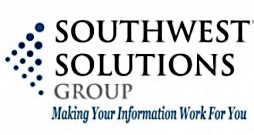
We make sure to use CJIS compliant staff when digitizing documents that contain CJI. We also provide a “secure file transfer” service that helps attorneys share this information within and outside their organizations once they migrate from paper to digital formats. Finally, our consultants are able to assess what tools, products and/or services are relevant to your specific needs for meeting the CJIS Security Policy requirements.
For more information about how we can help you meet CJIS Security Policy requirements, contact us by phone at 1-800-803-1083 or send us a message.
——————————————————————————————————————————————————————————————-
Anna Stratton is Director of Information Management Solutions at Southwest Solutions Group headquartered in Dallas, Texas. Anna specializes in records management and business process protocols, document scanning, policy design, and information retention policies and process. Anna has over 18 years of professional business management experience and provides advice nationwide through the SYSTEC Group’s “Ask the Expert” column. Ms. Stratton is also a dynamic national speaker and conducts private corporate seminars on a variety of topics in addition to providing keynote and educational speeches for organizations such as ARMA and the Lorman Seminar Group. Ms. Stratton has been recognized by Cambridge Who’s Who for demonstrating dedication, leadership and excellence in information and asset management.Is There a Real ROI for Document Scanning?
In the World of Document Scanning It’s Time to Stop Playing Games
I have conducted hundreds of assessments for companies and government agencies of all sizes over the past 20 years that we interested in document scanning. My consulting style is straightforward and direct, and my recommendations are always based on actual existing conditions as opposed to presumed processes. Although it’s not always easy to hear, most management and executive teams can quickly grasp the big picture of problem identification to resolution. They see it from a three dimensional perspective that includes operations, sales, compliance, and customer service. It is more efficient to gather those who may be vested in the results of a decision at the start of the process rather than trying to repeat and/or “sell” the concept later in the game and expending time and resources on “playing the procurement” game.
Document Scanning ROI is More Complex than Just Line Items and Hard Cost Components
One of the best pieces of advice I received early in my career came from a self-proclaimed dogmatic CFO who had an open disdain for sales; this guy could spin numbers faster than Rain Man. His response to my extensive document scanning ROI analysis was short, but definitely not sweet. He said, “Don’t ever try to sell a ROI to a numbers guy; you will always lose”. There’s no great ending to the story. They didn’t launch the document scanning project, and I didn’t have a slick comeback. His advice, however, made perfect sense. Line item document scanning ROI analyses look great when the hard cost components are equalized, but measuring soft costs associated with the benefits of technology, resource efficiencies (LEAN principles such as wasted human talent), or progress can be tricky.
What’s in the Box?
At the end of the day, some decisions are made because they make sense despite the balance sheet. For example, some organizations dismiss document scanning when compared to storing documents off-site. Why pay $100-$150 to scan a box of documents when it can be stored off-site for $6 a year? It could take 25 years to see a ROI on that expense, assuming the box is even kept that long. And in many cases, this is a solid argument. The problem with this scenario, however, is that the decision is typically made across the board for all documents, each having a unique set of criteria.
Additionally, this scenario is supported by a list of assumptions. For example, this ROI assumes that the documents are never retrieved again (if so, there are costs associated with retrieval, transportation, and re-filing). It also assumes that the contents of each box have been documented and that someone is managing the retention to ensure the box is destroyed at some point. If not, then the yearly cost is infinite. Over time, a combination of loose policy and continued personnel turnover can result in significant off-site storage bills for thousands of boxes. Does anyone really know what’s in most of those boxes? It’s pretty amazing what we find when we do an off-site storage assessment. Un-labeled boxes filled with Christmas decorations, or boxes labeled “John’s right side drawer”. We once located a large volume of boxes that had been labeled “Not sure”. We can laugh about it now, but I can assure you that no one was laughing at the time! Even boxes that have descriptions are destined to live off-site forever because with all the publicity surrounding the destruction of documents; no one wants to pull the trigger to shred.
The Soft Costs Associated with Managing Paper
There is also the litany of soft costs that, although very real, do not have predetermined values. For example, the cost to reproduce documents or information that may already exist is like paying a bill twice; we don’t know what we don’t know. The “simple math” storage cost comparison of document scanning versus off-site storage usually doesn’t include all the costs associated with managing paper: file folders; labels; boxes; storage equipment; labor to create and retrieve files; searching for missing files; interfiling documents; copy documents; or the physical space to store them before they go off-site. Depending on the values each organization might assign to the cost of managing paper, the ROI for document scanning can spin in a million directions. This type of analysis usually focuses on the financial impact of a proposed business decision, but that’s like comparing the cost of typewriters to computers. If we had the same approach back then, we would still be loading carbon paper.
Now don’t go running off to scan everything in off-site storage! The sins of the past may be best handled in a different way. But you can stop the bleeding. At some point, there is a stage in the lifecycle when paper not only starts to lose its value, but also can actually cost more than you bargained for.
Keep Moving Forward with the Digital Data Imaging Migration
Ultimately, there is an element of progress that will be difficult to quantify and yet will likely provide the most sound data towards the digital data imaging migration decision. Remember the typewriter analogy? The cost differential was vast and the benefits were not only uncertain, but also rarely utilized to their full potential. That still holds true today, but organizations nevertheless need to keep moving forward. Hopefully, we will do so having learned something along our technology journey. Forward progress isn’t taken in a single step; it’s a process.
——————————————————————————————————————————————————————————————-
Anna Stratton is Director of Information Management Solutions at Southwest Solutions Group headquartered in Dallas, Texas. Anna specializes in records management and business process protocols, document scanning, policy design, and information retention policies and process. Anna has over 18 years of professional business management experience and provides advice nationwide through the SYSTEC Group’s “Ask the Expert” column. Ms. Stratton is also a dynamic national speaker and conducts private corporate seminars on a variety of topics in addition to providing keynote and educational speeches for organizations such as ARMA and the Lorman Seminar Group. Ms. Stratton has been recognized by Cambridge Who’s Who for demonstrating dedication, leadership and excellence in information and asset management.Document Scanning isn’t an All or Nothing Proposition
Don’t Sell Me!
There is nothing more frustrating than someone trying to sell you something – regardless if you need it or not. Nothing infuriates me more than vendors who walk into a client’s office with a cute little portable scanner, a stack of paper, and a promise of life in digital Shangri-La! Document scanning isn’t about putting paper through a machine. It’s also not an “all or nothing” proposition. I visit with clients who have thousands of files that occupy miles of space and require scores of resources who have been lulled into thinking that the only way to stop the bleeding is to spend millions of dollars on document scanning. The result is that each year the paper grows and their perception of change only get more expensive.
Getting Started with Document Scanning
Migrating to the electronic document world can involve a lot of steps, but as someone once told me, I can guarantee you will never score if you don’t shoot! We don’t need enterprise wide spends to get started and quite frankly, it’s why so many organizations have been burned. The key is identifying a core document type or file set that brings you the best return (we’ll talk about ROI soon) and allows you to ease your way into the change. For example, you can start with scanning documents from your most recent year or perhaps consider core documents within a file that have a high retrieval rate. Maybe you have documents that are mission critical and the only copy you have is in paper format. The key to getting started with document scanning is not feeling the pressure to bang it all out at once but having a conversation about where it makes sense to start. We have clients that send us one box a week or sometimes just one box a month! At the end of the year, they’re 100,000 pages farther along than they were before or at least they haven’t added to the mountain they already have.
Understanding How Document Scanning Will Work for You
With today’s advancements in technology and process efficiencies, there are few organizations that cannot afford to begin outsourcing this task. The options today are almost unlimited and creative approaches – not pre-determined solutions – should be the way we approach our options. Putting paper through a scanner is not rocket science. The key to success is understanding how those documents are being used, why those documents should (or in some cases, shouldn’t be) scanned, and making sure that whatever you do today will work as you progress into new technology applications and platforms. I’ll say it again – there is no one size fits all solution – but there are many document scanning solutions and the right one needs to be the one that works best for you.
——————————————————————————————————————————————————————————————-
Anna Stratton is Director of Information Management Solutions at Southwest Solutions Group headquartered in Dallas, Texas. Anna specializes in records management and business process protocols, document scanning, policy design, and information retention policies and process. Anna has over 18 years of professional business management experience and provides advice nationwide through the SYSTEC Group’s “Ask the Expert” column. Ms. Stratton is also a dynamic national speaker and conducts private corporate seminars on a variety of topics in addition to providing keynote and educational speeches for organizations such as ARMA and the Lorman Seminar Group. Ms. Stratton has been recognized by Cambridge Who’s Who for demonstrating dedication, leadership and excellence in information and asset management.The First Step of Digital Data Imaging Migration: Problem Identification
Embracing Technology at Home
My Dad was 75 years old when we insisted he learn how to use a computer so we could communicate via email. Today, at 90 years old, he would be lost if he couldn’t send an email or check his accounts from the comfort of his home. My 20-something kids can’t fathom looking at a map or printing out a document, and I’m pretty sure none of them have ever actually seen a fax machine. As for me, I’m taken back when someone asks me to write a check (do they expire if you don’t use them for ten years?). I don’t want a paper receipt that I can lose. I complete applications online and execute contracts at 30,000 feet from my window seat, and most of us would be hard pressed to say we would prefer to go back to filing our taxes on paper forms. We can justify and embrace digital documents from home base, but why do we resist them and digital data imaging in the workplace?
Why are We Still Pushing Paper?
I work with hundreds of organizations that still push mounds of paper through their AP department. Resources are spent opening mail, routing paper, making copies, acquiring signatures, creating checks, and applying postage. You don’t have to be a CFO to know that our old comfortable processes are contrary to our objectives. So where is the logic? One contributing factor is likely job security, especially in today’s uncertain economy. It’s a fear unfounded and typically based in poor communication at a higher level. Getting more efficient doesn’t always mean a reduction in head count; it means we get more value for our dollar. It’s a lean concept that is widely accepted to address “wasted human talent.” Truth be told, most individuals would embrace an opportunity to utilize more of their analytical skills than they would their dexterity capabilities.
Another reason for the hesitancy to embrace digital data imaging may be one that plagues us in every area imaginable: being burnt. Early attempts at digital data imaging migration may not have been a good experience and access to technology without training and a succinct roadmap leaves most of us lost and frustrated. What do we call it? Where do we store it? How do we access it, and who is securing it? There’s added anxiety with the simultaneous introduction of new software applications and of course the ever-present compliance confusion; “Is a digital copy a copy or an original”? If it’s an original can I destroy the paper? As organizations start to delve into the details of digital data imaging migration, paralysis eventually replaces progress, and if organizations are able to get past the initial deterrents of digital data imaging migration, most will eventually stall out at the budget phase, despite the undisputed value on the bottom line.
Digital Data Imaging Migration Solutions Start with Identifying Your Unique Need
So is there a solution? The answer is “no.” There isn’t “a” solution, but there are “many” solutions. Problems arise when organizations try to align themselves with “a solution” before identifying their own unique need. Technology is a tool not a solution. Policy and processes are tools as well. Scanning documents and workflow and cloud storage are all components that may contribute to a solution, but we can be easily lulled into believing that any one of these components is a stand-alone solution.
Once an organization understands the process of “problem identification”, they can start to build a solution that addresses core business objectives rather than slipping into a “one size fits all solution”.
——————————————————————————————————————————————————————————————-
Anna Stratton is Director of Information Management Solutions at Southwest Solutions Group headquartered in Dallas, Texas. Anna specializes in records management and business process protocols, document scanning policy design, and information retention policies and process. Anna has over 18 years of professional business management experience and provides advice nationwide through the SYSTEC Group’s “Ask the Expert” column. Ms. Stratton is also a dynamic national speaker and conducts private corporate seminars on a variety of topics in addition to providing keynote and educational speeches for organizations such as ARMA and the Lorman Seminar Group. Ms. Stratton has been recognized by Cambridge Who’s Who for demonstrating dedication, leadership and excellence in information and asset management.Merging Paper and Electronic Documents | The Digital Data Imaging Migration
I Am a Member of Paper Lovers Anonymous
I’m going to say what none of us want to admit; I like paper! Yes, I use my iPhone and iPad to manage almost every aspect of my life, and I love the ease of electronic transactions and mobility. I want to take part in the progress and the digital data imaging migration, but there are just some areas in my world where paper still works better than electronic documents. I know how to find it (yes, there is a system to those piles), and I know what to do with it. Most of us have just figured out how to use those darn all-in-one copy machines and the thought of learning yet another way is just too daunting to even think about!
The Frustration We Experience Using Electronic Documents
In the same breath, we say we’re OK with change too, (as long as it’s associated with something like winning the lottery). We use electronic documents but don’t always mange them well. We have folder structures that go ten deep that made a lot of sense when we created them but are now the cause of carpel tunnel for all the clicks required to get to a single document. So, we save a document to our desktop where we know we can find it; except now our monitors have become mirrors of chaos that make us long for those paper file folders. In our infinite wisdom, we print those documents so that we can finally get to work on what started the search in the first place and for a single moment we feel a sense of control and inner peace. It’s no wonder digital data imaging is met with such resistance. Before we can really begin thinking about digital data imaging, electronic documents, and document scanning, we need to accept that there is a place for both paper and electronic documents and that the transition cannot be a quantum leap!
A New Perspective on the Paper vs Electronic Documents Conundrum
This is not a “how to” series, but rather a new perspective on how we handle the paper vs electronic document conundrum. The battle will continue between the paper lovers and the digitally determined until we start to recognize what it is we’re all actually battling about. It’s possible that we can continue with forward progress and still allow for a transitional comfort zone. I think both teams get a bad rap. The IT group is under the gun to find new ways for information to be useful while the departments have a confidence issue and are so busy trying to get their work done that they don’t have time to adapt to new ways.
It’s Time for Paper and Electronic Documents to Work Together
I don’t want to get all “rainbows and puppy dogs” here, but at some point we need to figure out how to understand each other. I sit at the table with department managers, IT directors and C-suite executives and no one speaks the same language. The pressure to stay current and relevant is real, but we can’t ignore the core business functions or the people performing them because we risk that the journey to the clouds is going to be a bumpy ride. The good news is that the sun does shine above those clouds (I promise that’s the last sappy statement I’ll make). Trying to figure how to deal with all the paper of the past, the paper we still use, and the paper we don’t want to create anymore includes technology, outsourcing, financial, and change management considerations. Trying to ice out one of those aspects will either paralyze organizations from doing anything or at the minimum, ruffle enough feathers along the way to warrant resistance.
Join me as we navigate through the world of digital data imaging and document scanning and talk about real world scenarios that include problem identification, understanding ROI, and managing changes along the way.
——————————————————————————————————————————————————————————————-
Anna Stratton is Director of Information Management Solutions at Southwest Solutions Group headquartered in Dallas, Texas. Anna specializes in records management and business process protocols, document scanning, policy design, and information retention policies and process. Anna has over 18 years of professional business management experience and provides advice nationwide through the SYSTEC Group’s “Ask the Expert” column. Ms. Stratton is also a dynamic national speaker and conducts private corporate seminars on a variety of topics in addition to providing keynote and educational speeches for organizations such as ARMA and the Lorman Seminar Group. Ms. Stratton has been recognized by Cambridge Who’s Who for demonstrating dedication, leadership and excellence in information and asset management.Color Coded Folders with RFID Tracking Tags | Efficient File Management
Color Coded Folders with RFID Tracking Tags Helps Financial Services Firm Track Automotive Titles
![]() A national financial services firm recently improved their customer service and created an efficient file management system by using color coded folders with RFID tracking tags. The firm works with dealers all over the nation to finance the purchase of vehicles from over 1,000 inventory sources, manufacturers, and wholesalers. They specialize in individual financing of new and used cars to dealers called floor planning. The financial services firm holds and files the titles as collateral in these loan transactions. The titles are kept in file folders at a centralized records location.
A national financial services firm recently improved their customer service and created an efficient file management system by using color coded folders with RFID tracking tags. The firm works with dealers all over the nation to finance the purchase of vehicles from over 1,000 inventory sources, manufacturers, and wholesalers. They specialize in individual financing of new and used cars to dealers called floor planning. The financial services firm holds and files the titles as collateral in these loan transactions. The titles are kept in file folders at a centralized records location.
There is a large volume of titles constantly being checked in and checked out and managing this process is extremely difficult. The inability to locate title file folders when they are requested results in poor customer service to auto dealers, and inefficient file management operations for the financial services firm.
Pre-numbered Color Coded Folders with RFID Tracking Tags for Quick Access and Efficient File Management
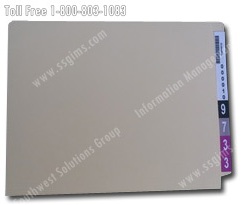 The financial services firm turned to RFID to improve the speed and accuracy of the check-in and checkout process of title file folders. Pre-numbered color coded file folders with RFID tracking tags attached inside the folder were purchased to solve the problem.
The financial services firm turned to RFID to improve the speed and accuracy of the check-in and checkout process of title file folders. Pre-numbered color coded file folders with RFID tracking tags attached inside the folder were purchased to solve the problem.
The color coded file folder labels assist in locating misplaced or misfiled folders, which has improved their efficiencies significantly. At the same time, the RFID tags automate the check-in and checkout file process by keeping track of where all the folders are at any given time and instantaneously updating their location in a database through the use of radio waves and an antenna receiver.
Efficient File Management with Color Coded Folders with RFID Tracking Tags and Filing Solutions Services
Southwest Solutions Group’s Information Management Division provides the experience and knowledge to help you with unique filing solutions for your business. Call us today at 1-800-803-1083 or send us an email to find out how color coded folders with RFID tracking tags will improve your filing process.
Electronic Medical Records (EMR) for Managing Patient Information
 Electronic Medical Records (EMR) for Managing Patient Information
Electronic Medical Records (EMR) for Managing Patient Information
Healthcare providers face many challenges including, protecting patient records, quickly retrieving information, and reducing administrative overhead. Also, the law requires physicians to maintain complete and accurate medical records for each of their patients, and a failure to maintain a record for each patient constitutes professional misconduct.
Investing in an electronic medical records (EMR) system is an excellent way to ensure your healthcare facility will be able to provide efficient, coordinated, cost effective, safe and high-quality patient care.
Benefits of Managing Patient Information with Electronic Medical Records
Electronic Medical Records allow doctors easy access to complete and up to date patient medical records. The EMR provides important information about medications the patients are taking, immunizations, and allergies, which a patient might not remember when they are filling out forms. Also, personnel can quickly update the records with any address changes or insurance changes.
Electronic Medical Records save money. First, they save on the cost of paper and file folders. Second, an EMR system saves space because you no longer have to find areas to store and organize so many paper records. Finally, EMRs save on labor costs because employees can just type a few identifying keystrokes to retrieve a patient’s record instead of sorting through hundreds of file folders to retrieve and re-file a patient charts.
Ready to Convert to an Electronic Medical Records System?
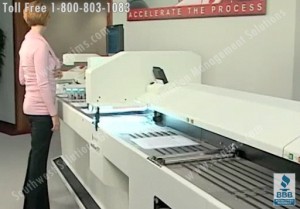 Whether your business is a hospital, clinic or small private practice Southwest Solutions Group Information Management professionals can help you convert to an Electronic Medical Record System. We offer secure EMR-Compatible HIPAA compliant medical records and patient chart scanning services that are cost effective without sacrificing quality, service, or the privacy of your patients. If you want more information about EMR and our state of the art scanning services, call us at 1-800-803-1083 or send us an email.
Whether your business is a hospital, clinic or small private practice Southwest Solutions Group Information Management professionals can help you convert to an Electronic Medical Record System. We offer secure EMR-Compatible HIPAA compliant medical records and patient chart scanning services that are cost effective without sacrificing quality, service, or the privacy of your patients. If you want more information about EMR and our state of the art scanning services, call us at 1-800-803-1083 or send us an email.
Improving Your Filing Systems By Converting to Color Coded Side Tab Files
Do You Need To Make Changes To Your Filing System?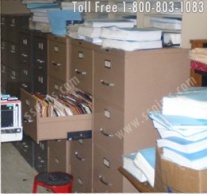
“I hate our filing system. Filing paperwork is so frustrating. Files aren’t in the right place and you have to go searching through offices to try and find files. Our filing cabinets are crammed full of documents and every time we get a new client, we have to move files from one cabinet to another cabinet to make room. No one likes our filing system.”
Does this situation sound familiar to you? If it does, then you have come to the right place. Southwest Solutions Group® recently converted a firm to color coded files with barcode file tracking to solve their file management problems.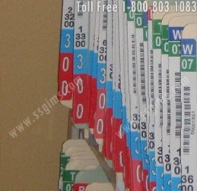
Converting to Color Coded File Folder Labeling Systems
After performing a filing systems needs analysis, we made a recommendation to the firm to convert from top tab legal-size file cabinets to a side tab letter-size color coded shelf filing system. The project included merging several different types of files into one centralized file systems. New file folders were supplied with one-piece color coded labels that included a colored classification label to identify the type of file, as well as the year the file was originated, and the file number. The new color coded system helps personnel find files quicker and helps to identify misplaced files in the system. (click here to read about other consulting services we offer to find what will work best for you)
 Adding Barcode to Improve Tracking File Folders
Adding Barcode to Improve Tracking File Folders
Another part of the redesign of the firm’s filing system was to implement a barcode file tracking system to reduce the time spent searching for files when they were out of the filing system. The barcode file tracking software allows the firm to know exactly where files are located at any given time through a database linking files with employees and locations.
Turning Your File Room Mess into an Efficient Records Management System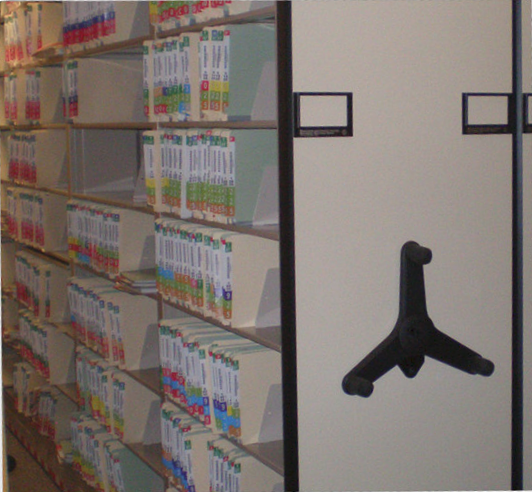
With a new color coded filing system and barcode tracking software, the firm was able to make their employees happy and more productive. If you would like to learn more details about how we were able to help this firm create an efficient records management system, click here to download the PDF file.
I f you would like more information about how Southwest Solutions Group can assist your business with creating an efficient records management system, give us a call at 1-800-803-1083 or click here to send us a message.
f you would like more information about how Southwest Solutions Group can assist your business with creating an efficient records management system, give us a call at 1-800-803-1083 or click here to send us a message.
How to Use End Digit or Terminal Digit Filing to Benefit your Organization’s Management of Records
Managing Productivity Problems in Alphabetical and Straight Numeric File Systems
 If you’ve been using an alphabetical or a straight numeric filing system to organize your medical charts or company’s records, you may want to consider the benefits of terminal digit filing or end digit filing. To determine if end digit or terminal digit filing can benefit your organization, ask yourself if you can identify with any of the following statements.
If you’ve been using an alphabetical or a straight numeric filing system to organize your medical charts or company’s records, you may want to consider the benefits of terminal digit filing or end digit filing. To determine if end digit or terminal digit filing can benefit your organization, ask yourself if you can identify with any of the following statements.
- Do you experience misfiles in your alphabetical filing system due to clerks filing names incorrectly or have to constantly train staff on how to file alphabetically?
- Do you have a difficult time evenly and equally distributing the workload to your file clerks for productivity?
- Do you need to backshift files periodically to make room in your file shelving after purging records?
Problems with Alphabetical Filing Systems
You would think alphabetical filing would be easy to set up and manage, but alphabetical filing systems can be very difficult to maintain. Some of the problems with alphabetical filing systems are:
- Difficulty in managing where file growth will occur in your filing system resulting in periodic reorganizing and shifting of files to make room for file growth.
- Misfiled information due to confusion in how to file certain names
Below are some alphabetical filing situations that can cause confusion and hamper the productivity of your records management:
- When a file name includes two surnames – the mother’s and father’s last names – rather than a first, middle, and last name
- If several files have the same name (such as Tom Jones or Mary Smith)
- Determining if Mc names come before or after Mac names
- Patients who go by their middle name instead of their first name or patients with hyphenated names
Problems with Straight Numeric Filing Systems
 Straight numeric filing systems identify each patient with a unique number, eliminating any confusion about which file or patient chart you are looking with an alphabetical filing system. The main problem with a straight numeric filing system is distribution the workload evenly and equally among your staff and reorganizing and shifting files after purging records. Also, with any numeric filing system you need a cross reference database to connect the patient or company name to the file number.
Straight numeric filing systems identify each patient with a unique number, eliminating any confusion about which file or patient chart you are looking with an alphabetical filing system. The main problem with a straight numeric filing system is distribution the workload evenly and equally among your staff and reorganizing and shifting files after purging records. Also, with any numeric filing system you need a cross reference database to connect the patient or company name to the file number.
Benefits of Terminal Digit Filing and End Digit Filing
Terminal digit filing, or end digit filing, makes more sense for managing large quantities of records. Terminal digit and end digit filing allows files to expand at a controlled rate, eliminating the need to shift files after purging older records. Depending on how you set up your terminal digit filing system, the last two, three, or four digits of the file number are treated as a single number. Since all numbers in the file are sorted by their ending digits, equal sections can be set up in your file shelving containing the same number of folders, so work can be divided up evenly amongst your file staff. Terminal digit filing does not change the numeric file labels, it just reorganizes the files in such a way that allows you to better manage your filing system.
If you are considering the advantages of converting to a terminal digit or end digit filing system, call us today at 1-800-803-1083 or contact us, and one of our records management experts will call you to discuss your filing requirements.
Improve Your Law Firm’s Records Management with Radio Frequency Identification (RFID) Tracking | RFID File Tags Locate Legal Case Files
Improving Your Law Firm’s File Tracking with RFID
Is records management one of the most problematic areas of your law practice? You know that if your staff can’t find client files when needed, stress, frustration and operational inefficiencies arise in the office. A great solution to this problem is a Radio Frequency Identification (RFID) Records Management System.
How RFID Automatically Tracks and Locates Files with Tags
RFID tracking tags can be embedded in your files or color coded labels to provide an instantaneous location for files or documents. RFID tracking tags come equipped with tiny RFID transmitters built into file labels. The RFID Readers check files in and out of the file room and track the files wherever they go in the office and provide tracking information for when they leave the office. The RFID system enables groups of files to be processed in and out of the file room and automatically updates the file location in the database. This means if a file is moved from one office to another, the RFID software will track the file’s location, which can eliminate search time and frustration in your office. Portable RFID Readers can be used to inventory files circulating in individual offices. All you have to do is wave the Reader around your desk or office and the portable RFID reader will beep when the file is located. (Click here to read a case study on how RFID tracking improved a law firm’s record management)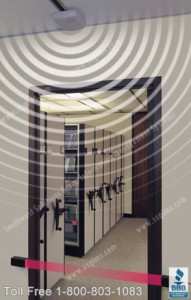
Benefits of Tracking Case Files with the RFID Records Management System
RFID tracking will allow you better management of your case files and other important documents because,
•Locations and statuses of files can be automatically identified and instantaneously updated
•You can track files throughout the workflow whenever they move or change hands
•Finding missing files quickly reduces time wasted searching
 Is Your Law Firm Ready for RFID File Tracking?
Is Your Law Firm Ready for RFID File Tracking?
Southwest Solutions Group’s Information Management Division can help your law firm successfully plan and implement an RFID Records Management Tracking System. Our team of knowledgeable and experienced RFID experts will meet with you to understand your objectives, analyze your current process, and create an innovative RFID solution that meets your specific needs. Call us today at 1-800-803-1083 or email us for more information on how you can find your files when you need them with a RFID Tracking System. We also offer other records management services such as digital imaging for litigation support, managing the lifecycle of records, and RIM audits.


